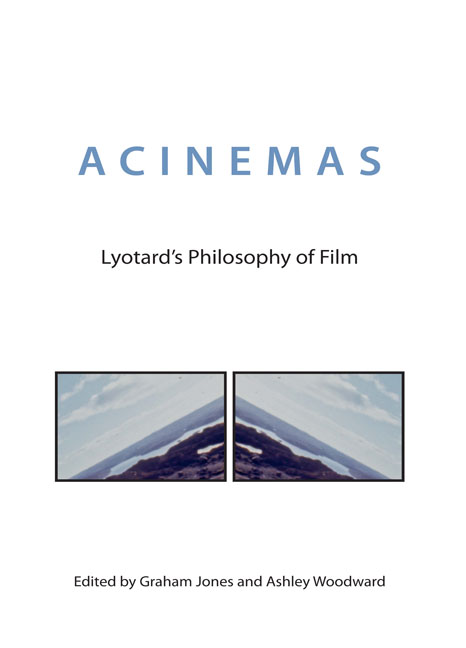Book contents
- Frontmatter
- Contents
- Acknowledgements
- Abbreviations
- Translators’ Note
- I Openings
- II Lyotard's Essays on Film
- III Approaches and Interpretations
- IV Applications and Extensions
- 11 Discourse, Figure, Suture: Lyotard and Cinematic Space
- 12 On Dialogue as Performative Art Criticism
- 13 Give Me a Sign: An Anxious Exploration of Performance on Film, Under Lyotard's Shadow
- 14 How Desire Works: A Lyotardian Lynch
- 15 Aberrant Movement and Somatography in the Hysterical Comedies of Roméo Bosetti
- Appendices
- Notes on Contributors
- Index
15 - Aberrant Movement and Somatography in the Hysterical Comedies of Roméo Bosetti
from IV - Applications and Extensions
Published online by Cambridge University Press: 23 June 2018
- Frontmatter
- Contents
- Acknowledgements
- Abbreviations
- Translators’ Note
- I Openings
- II Lyotard's Essays on Film
- III Approaches and Interpretations
- IV Applications and Extensions
- 11 Discourse, Figure, Suture: Lyotard and Cinematic Space
- 12 On Dialogue as Performative Art Criticism
- 13 Give Me a Sign: An Anxious Exploration of Performance on Film, Under Lyotard's Shadow
- 14 How Desire Works: A Lyotardian Lynch
- 15 Aberrant Movement and Somatography in the Hysterical Comedies of Roméo Bosetti
- Appendices
- Notes on Contributors
- Index
Summary
The time has come to consider the would-be symptoms as artistic creations.
Jean-François Lyotard (UM)In his books Discourse, Figure and Libidinal Economy, and in two very short essays on cinema, ‘Acinema’ and ‘The Unconscious as Mise-en-scène’, Jean- François Lyotard considers the stakes of intermeshing psychical operations, as they have been understood by the discourse of psychoanalysis, with aesthetic practices. A handful of ideas that Lyotard formulates over the course of these works – aberrant movement, the relation between desire and mise-en-scène, and the emergent concept of somatography – are particularly relevant to the aesthetics of early film comedies. In the films of cinema's first decades, the operation of the comic is put to the task of devising for film a kind of primitive poetics. Just as the hysteric performs a kind of somatography in order to ‘speak’ without the use of words, the comic poetics of so-called ‘primitive’ cinema eschews the use of verbal discourse and circumvents the regime of perceptual reference and cognition conventionally associated with the photographic image to make mise-en-scène coincide with desire. By creating a circuit that draws on the resources of automatism to impute and insinuate, the gag gives expression to the drive independently of discursive means. Its aberrant movement sets in play a kind of ‘somatographic operation’, transferring psychical energy from the mechanical and corporeal world to the audience to make us laugh.
And yet, we find ourselves in a position of both agreeing and disagreeing with Lyotard over whether ‘symptom’ or ‘artistic creation’ best captures the sense of the part played by the comic in this embryonic cinematic ‘language’.
L'HOMME AIMANT (1907)
In ‘Acinema’, Lyotard contrasts the pleasure of cinematographic movement that derives from the subordination of movement to narrative purpose with the jouissance experienced in the observation of movement in-itself. Is there room in Lyotard's analysis of ‘acinematic’ movement to understand the peculiarity of comic movement? In his discussion of the ‘paradox of immobilisation’ in the writings of Sade and Klossowski, Lyotard acknowledges that the ‘intensification’ that humiliates the whole person must take place on the representational axis:
- Type
- Chapter
- Information
- AcinemasLyotard's Philosophy of Film, pp. 180 - 194Publisher: Edinburgh University PressPrint publication year: 2017



